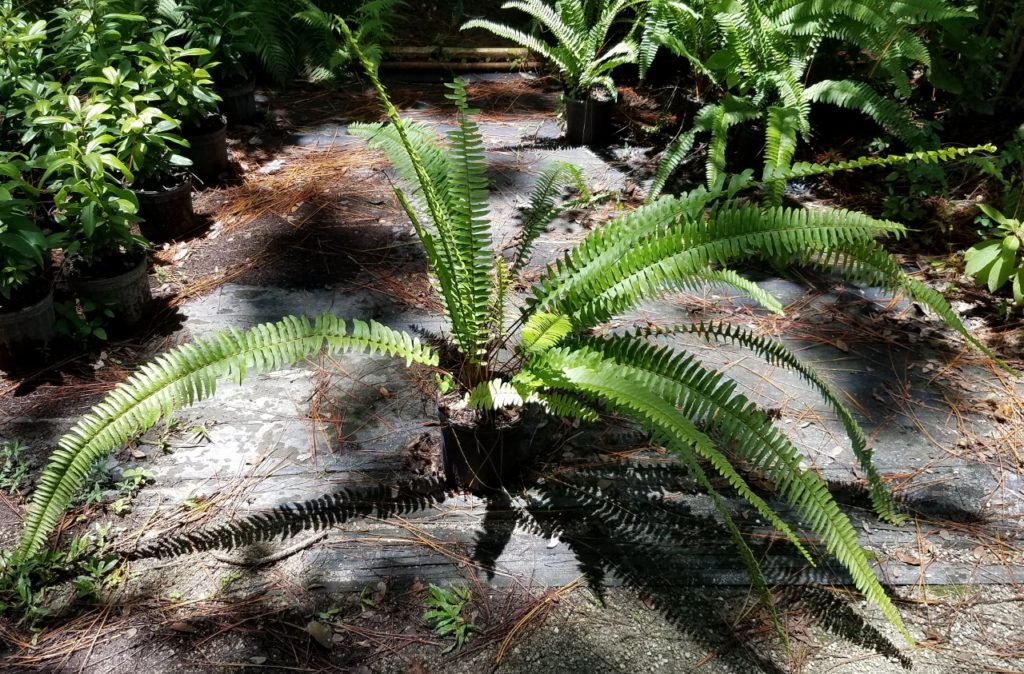Boston Fern
Nephrolepis exaltata
Boston Fern is native to all of Florida and grows in moist shady woodlands and swamps away from the ocean. Although it spreads from underground roots, I have never seen it take over an area the way the invasive ferns do.
The leaves are usually below three feet long and less than six inches wide. I use this plant in moist sites and sites too dry for the Marsh and Swamp ferns such as under an oak tree.
The problem with this great plant is that there are two invasive ferns and a native one that look very similar. It is maddening to figure out the differences because the characteristics often overlap.
For information about the Asian Sword Fern, click here, and here.
For information about the Tuberous Sword Fern click here.
Let’s throw in the native Giant Sword fern to really get you confused. Click for more info, and here.
I look for the auricle or pointed foot at the base of each leaflet that points toward the top of the leaf. If the foot is wedge shaped and doesn’t touch the midvein of the leaf above it, then it is native Boston Fern. If the foot is wedge shaped and touches the midvein above it, then it’s Tuberous Sword Fern.
Look at the lower leaflets because the upper ones tend to bunch together for both ferns. The tuberous Sword Fern has small tubers on the roots. Just dig it up to see.
The Asian Sword Fern has a pointed foot on the leaflet. The leaf is a bit larger than the Boston Fern yet smaller than the Native Giant Sword Fern.
The lance shaped scales at the base of the Asian Sword Fern’s new leaves are dark brown with a lighter brown edge. You will need a 10X hand lens to see this. Both native ferns have a dark brown spot on scattered light brown fluffy scales.
For large shady areas that won’t have foot traffic, Boston Fern is a great long term choice. It can be mixed with Giant Sword fern but will crowd other less territorial plants.
You can also encourage it to climb up a Cabbage Palm or other support. Just cut it to the ground if it looks old and new growth will soon fill in.
And my article on all four sword ferns, The Sword Ferns
